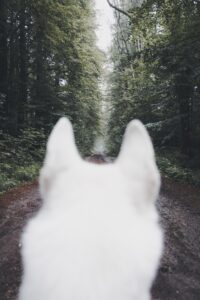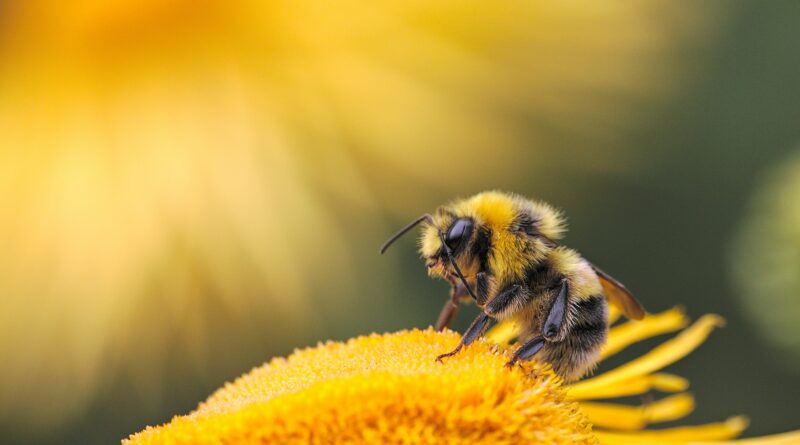The Coming Age of Alternative Ways of Seeing. Part 1: Foundations
The Coming Age of Alternative Ways of Seeing. Part 1: Foundations
Christopher Lueg
Making the Case for Changing Human Centered Design
Human lives are, and have always been, completely entangled with the well-being of non-human others (Clarke et al 2019, p61) and “no matter how technologically advanced the lives we live, we are still biological creatures who need oxygen to breathe, soil to grow plants and drinking water to survive” (Sznel 2020b). Concerns about human activity transforming the planet, often to the detriment of ecosystems and species including the human species, have become urgent (Clarke et al 2019, Tomitsch et al 2021, Sheikh et al 2023). Human interventions are pushing non-human creatures out of their natural habitats causing biodiversity to decline at rates unprecedented in human history (Einhorn and Leatherby 2022).
Environment-centered design (Sznel 2020a) and life-centered Design (e.g., Tomitsch et al 2021) are some of the terms that have been coined to emphasize that traditional human-centric design approaches preference by definition human needs over the needs of other creatures. Respective approaches are increasingly considered untenable for the age of the Anthropocene. There is also growing agreement that responding to planetary level change will require environmentally aware interaction design practices to move beyond nudging individuals to “shaping environmental movements” (Dourish 2010, quoted in Borthwick et al 2022, p2).
—Considerations of environmental-centered design and life-centered design lead us to the question: How to represent non-human animals in human centered design?—
Representing Non-Human Animals
Despite these efforts it remains largely exploratory as to how to involve non-human animals as stakeholders in design projects that will affect their habitats. One such approach is constructing non-human personas representing animals, such as possums, lorikeets, and bees (Tomitsch et al 2021). A persona is usually a data-driven construct created to help designers during the design process better understand their prospective users (Cooper 1999, see also Norman 2004 for comments on the history of the approach). Personas are not usually enacted but Norman (2004) reports positive experiences with having someone role-play what he calls ad-hoc personas by which he means personas developed on the basis of experience instead of data. Non-human personas tend to follow a structure that resembles the structure of traditional personas in that they are assigned human-like characteristics, such as lifestyle or backstory, and motivation. Tomitsch and Bain (2023) report on how frogs were represented as stakeholder in the design of a citizen science app, via a non-human persona. The persona included a description, needs, and pain points. Typical user attributes were replaced by details about the frog’s calling period and additional biological information. The team used the frog persona as well as a biologist’s persona “to ensure that they were solving for the ‘right problem'”.
Speculative approaches, such as imagining acoustic ecologies and speculative masked walks to inform participants (Clarke et al 2019), can help make sense of non-human personas and let them come “alive” to some extent but in the end, speculative masked walks and empathizing with non-human personas remains firmly grounded in the human designer’s experience of the world.
Enabling Alternative Ways of Seeing
It is time to add to the mix approaches that allow participants to venture beyond what is largely empathizing/imagining and thereby complement non-human persona-based approaches. Research in animal behavior/perception and simulation (computational or otherwise) now allows to offer glimpses into how the world would likely appear to those represented by non-human personas. Such technologies, while offering glimpses into how their world, do not enable participants to experience their Umwelt (Schroer 2021) in any non-trivial sense. Regardless, they can offer valuable insights into how their world would be affected by human-prioritizing interventions. We call the approach to let people explore what other human or non-human animals may see viewsonas. For further details on the approach see “The Coming Age of Alternative Ways of Seeing, Part 2: Viewsonas” (Lueg, forthcoming).
Moore (2019) and Yong (2022) offer expansive overviews of the dazzlingly diverse sensory and neural capabilities found among non-human animals. Offering glimpses of what non-human animals “see” can only be deemed feasible in select cases of animal species where researchers have developed a reasonably good idea of how and what they “see.” There are other animals where researchers understand little about how they perceive their environment. For example, there are animals including migratory birds and marine animals that possess sense organs for magnetoception which allows them to use the strength and/or direction of the Earth’s magnetic field for navigation. Trying to represent that sense would be highly speculative since it is “not a sense that humans share, so we have no intuition as to where the sense organs might be or how they function.” (Johnsen 2017, p3). Humans also have no sense organ that would allow them to perceive patterns of polarized light, unlike the desert ant Cataglyphis that uses patterns of polarized light for their homing behavior in the largely featureless Tunesian desert (Wehner 2020).
As of now, most people have only experienced non-human ways of seeing as conveyed by movies and similar media. Examples such as an alien hunter’s vision portrayed in the 1987 science fiction action movie Predator are designed for human viewers though, and their human vision apparatus, and they do not aim to provide scientifically accurate representations of those views either. Similarly, computer game titles like “Bee simulator” (Playstation store) typically only shrink the human player to a particular body size and allow for movements in space that may resemble flying. There is no attempt though to represent how the environment would look to a bee which would be a formidable scientific and game development challenge considering the often-underestimated complexity of bees (Chittka 2022).
 Canines are an example of a species familiar to many that is well researched in terms of their visual capacity. Still, even for dog enthusiasts it might be a revelation to experience how the world looks like when the visual impression is computationally altered in such a way that it reflects canine vision. Dogs have dichromatic color vision whereas most humans have trichromatic color vision which suggests that the world looks to dogs like it would look to humans affected by deuteranopia which is a type of red-green color blindness. Jevbratt (2009) represented those different ways of seeing in exhibitions and in the development of software filters for video and imaging software. It is worth noting that despite the existing research, it is well possible that canines “see” very differently to what we currently think it is because “we could not be sure whether canine and human brains process similarly the visual sensation” (Pongrácz et al 2017, p54). Oliver Sacks’s (1985) The Man Who Mistook His Wife for a Hat reminds us that it can be hard to even understand fellow humans and the way their brains process visual and other sensory information. In the case of canines there is emerging evidence that dogs’ sense of smell is somehow integrated with their vision (Andrews 2022) and it’s unclear what that means for what they may “see.”
Canines are an example of a species familiar to many that is well researched in terms of their visual capacity. Still, even for dog enthusiasts it might be a revelation to experience how the world looks like when the visual impression is computationally altered in such a way that it reflects canine vision. Dogs have dichromatic color vision whereas most humans have trichromatic color vision which suggests that the world looks to dogs like it would look to humans affected by deuteranopia which is a type of red-green color blindness. Jevbratt (2009) represented those different ways of seeing in exhibitions and in the development of software filters for video and imaging software. It is worth noting that despite the existing research, it is well possible that canines “see” very differently to what we currently think it is because “we could not be sure whether canine and human brains process similarly the visual sensation” (Pongrácz et al 2017, p54). Oliver Sacks’s (1985) The Man Who Mistook His Wife for a Hat reminds us that it can be hard to even understand fellow humans and the way their brains process visual and other sensory information. In the case of canines there is emerging evidence that dogs’ sense of smell is somehow integrated with their vision (Andrews 2022) and it’s unclear what that means for what they may “see.”
Echolocation as used by bats is alien to most humans (see Buckingham for rare exceptions). Still, the way echolocation presents to bats may be more similar to what humans see than we might think. Dawkins (1986, p34) suggested decades ago that “bats ‘see’ in much the same way as we do, even though the physical medium by which the world ‘out there’ is translated into nerve impulses is so different—ultrasound.” We might be able to obtain a better understanding of bat echolocation if we could “see” how ultrasonic signals travel and how they get reflected by objects. Bats, on the other hand might be thrilled if they could hear how light is reflected by objects which is what humans are able to perceive within their natural limitations.
Even animal researchers forget sometimes that non-human animals see the world differently and may respond differently to stimuli. For example, certain colors or features may be perceived as signaling by human researchers but not in a corresponding way by animals. An example of that is the cleaner shrimp that turned out not capable of perceiving colors that researchers assumed to be stimuli (Caves et al 2019). de Waal (2016, p71) describes an experiment where capuchin monkeys using touchscreens had to learn to associate two-dimensional patterns of pixels to a live individual in the real world, something humans take for granted.
It is crucial to keep in mind that computer mediated “views” especially those that glimpse across the species barrier are not ontologically neutral as they change the nature of what is perceived. The speculative nature of such glimpses does not interfere with their utility though as long as those representations are not meant to be scientifically accurate simulations of the perception of other creatures but rather tools used by human designers when empathizing with non-human personas representing them. The aim is to be able to see how planned impacts on the creature’s environment might present visually to them, not to understand what it is like to be a possum, a lorikeet, a bee, or a bat (Nagel 1974).
Conclusions and future work
The need for to look beyond the species barrier is driven by the need to better understand how their world might be affected by human-prioritizing designs but at the same time it’s a fascinating way to learn about other species and how they might be seeing the world. In Part 2 we look in more detail at technological considerations and in Part 3 (forthcoming) we look at further examples of non-human animals where researchers know just enough about their visual perception to create meaningful human-oriented representations thereof (Cheng and Lueg, forthcoming).
Continue to Part 2.
References
Andrews, E.F., Pascalau, R., Horowitz, A., Lawrence, G.M. and Johnson, P.J., 2022. Extensive Connections of the Canine Olfactory Pathway Revealed by Tractography and Dissection. Journal of Neuroscience, 42(33), pp.6392–6407.
Borthwick, M., Tomitsch, M., and Gaughwin, M. (2022). From Human-Centred to Life-Centred Design: Considering Environmental and Ethical Concerns in the Design of Interactive Products. Journal of Responsible Technology 10 (2022), 100032.
Caves, E.M., Nowicki, S. and Johnsen, S. (2019). Von Uexküll revisited: addressing human biases in the study of animal perception. Integrative and Comparative Biology, 59(6), pp1451–1462. Oxford University Press.
Chittka, L. (2022). The mind of a bee. Princeton University Press.
Clarke, R., Heitlinger, S., Light, A., Forlano, L., Foth, M., and DiSalvo, C. (2019). More-than-human participation: design for sustainable smart city futures. Interactions, 26(3), pp. 60–63. ACM.
Cooper, A. (1999). The Inmates Are Running the Asylum: Why High Tech Products Drive Us Crazy and How To Restore the Sanity. Indianapolis, IN: Macmillan, 1999
Dawkins, R. (1986). The blind watchmaker. Longman.
De Waal, F. (2016). Are We Smart Enough to Know How Smart Animals Are? W.W. Norton.
Dourish, P. (2010). HCI and Environmental Sustainability: The Politics of Design and the Design of Politics. Proc. DIS 2010, August 16–20, 2010, Aarhus Denmark. ACM.
Einhorn, C. and Leatherby, L. (2022). Animals Are Running Out of Places to Live. The New York Times Dec. 9, 2022.
Jevbratt, L. (2009). ZooMorph - enabling interspecies collaboration. Presentation at
ISEA 2009.
Johnsen, S. (2017). Open Questions: We don’t really know anything, do we? Open questions in sensory biology. BMC Biology 15:43. Springer Nature.
Moore, P. A. (2019). Into the Illusive World: An Exploration of Animals’ Perception. Springer.
Nagel, T. (1974). What Is It Like to Be a Bat? Philosophical Review. 83 (4): 435–450.
Norman, D. (2004): Ad-Hoc Personas and Empathetic Focus. jnd.org Posted 4 December 2018. https://jnd.org/ad-hoc_personas_empathetic_focus/
Pongrácz, P., Ujvári, V., Faragó, T., Miklósi, A., Péter, A. (2017). Do you see what I see? The difference between dog and human visual perception may affect the outcome of experiments. Behavioural Processes, Vol 140, 2017, pp 53–60, ISSN 0376-6357.
Sacks, O. (1985). The Man Who Mistook His Wife for a Hat. London: Duckworth.
Schroer, S.A. (2021) Jakob von Uexküll: The Concept of Umwelt and its Potentials for an Anthropology Beyond the Human, Ethnos, 86:1, 132-152.
Sheikh, H., Foth, M., and Mitchell, P. (2023). (Re)imagining the ibis: Multispecies future(s), smart urban governance, and the digital environmental humanities. In Travis, Charles, Dixon, Deborah P., Bergmann, Luke, Legg, Robert, & Crampsie, Arlene (Eds.) Routledge Handbook of the Digital Environmental Humanities. Routledge, Abingdon, Oxon, pp. 490–515.
Sznel, M. (2020b). Tools for environment-centered designers: Actant Mapping Canvas. UX Design Collective. May 5, 2020. https://uxdesign.cc/tools-for-environment-centered-designers-actant-mapping-canvas-a495df19750e
Sznel, M. (2020a). The time for Environment-Centered Design has come. UX Design Collective. May 5, 2020. https://uxdesign.cc/the-time-for-environment-centered-design-has-come-770123c8cc61
Tomitsch, M. and Bain, I. (2023). Non-human personas in practice. Medium UX Collective. Feb 12, 2023. https://uxdesign.cc/non-human-personas-in-practice-5ad4c7a97799
Tomitsch, M., Fredericks, J., Vo, D., Frawley, J., and Foth, M. (2021). Non-human Personas: Including Nature in the Participatory Design of Smart Cities. Interaction Design and Architecture(s), 50(50), pp. 102–130.
Wehner, R. (2020). Desert Navigator: The Journey of an Ant. Belknap Press.
Yong, E. (2022). An immense world. Random House.
Cite this article in APA as: Lueg, C. (2023, March 22). The coming age of alternative ways of seeing. Part 1: Foundations. Information Matters, Vol. 3, Issue 3. https://informationmatters.org/2023/03/the-coming-age-of-alternative-ways-of-seeing-part-1-foundations/
Author
-

Christopher Lueg is a professor in the School of Information Sciences at the University of Illinois Urbana-Champaign. Internationally recognized for his research in human computer interaction and information behavior, Lueg has a special interest in embodiment—the view that perception, action, and cognition are intrinsically linked—and what it means when designing for others. Prior to joining the faculty at Illinois, Lueg served as professor of medical informatics at the Bern University of Applied Sciences in Biel/Bienne, Switzerland. He spent almost twenty years as a professor in Australia teaching at the University of Technology, Sydney; Charles Darwin University; and the University of Tasmania, where he co-directed two of the university's research themes, Data, Knowledge and Decisions (DKD) and Creativity, Culture, Society (CCS).
View all posts






